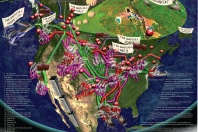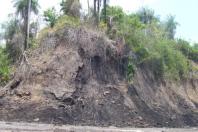Group’s new oil shale report contains wildly inaccurate claims
Group’s new oil shale report contains wildly inaccurate claims
May 9, 2013
The Institute for Energy Research (IER), recently posted a blog about oil shale that doesn’t have its facts straight.
The IER blog falsely claims that the federal government put oil shale resources ‘under lock and key’. Oil shale companies have been awarded billions in taxpayer-funded subsidies and received research, development, and demonstration (RD&D) leases on publicly owned lands that don’t require the payment of bonuses, rents, or royalties.
Despite more than a century of failed oil shale projects and billions of dollars risked, taxpayers are still subsidizing oil shale research and development. Currently, there are seven such RD&D leases being pursued in Colorado and Utah. The companies include: Shell, American Shale Oil (AMSO), Enefit, ExxonMobil, and Natural Soda Holdings.
Chevron also had an RD&D holding, but abandoned it last February in order to focus on viable energy sources – hardly the first oil shale experiment to go
bust. On Black Sunday, Exxon closed its Colony oil shale project, which put more than 2,000 out of work and devastated the economy of Colorado’s western slope for years.
In their blog, IER also highlights Estonia, considered the world leader in oil shale, as the prime example of successful oil shale development – but that’s no
t factual either. Oil shale isn’t economically viable in Estonia, has caused significant water, air and land pollution, and is highly controversial.
The head of Estonia’s biggest oil shale company, Eestia Energia – known as Enefit in the U.S. – has admitted that oil shale is not profitable without large taxpayer subsidies. Underscoring this point was Moody’s recent move downgrading Enefit’s credit rating to negative, over concerns that they can’t make oil shale profitable.
In addition, oil shale is a dirty, polluting fossil fuel that’s responsible for 80 percent of all of Estonia’s pollution. Enefit’s track record includes contaminated groundwater, creating 600-foot high mountains of oil shale waste that spontaneously ignite, and causing the emission of “lots of carbon dioxide.”
IER’s blog also boasts that there are huge oil shale deposits in the U.S. But these projections are irrelevant because oil shale isn’t a viable energy source and fails the basic economic test. In other words, the return on oil shale doesn’t outweigh the investment. The amount of energy and water that it takes to superheat, mine and process oil shale – which is actually fossilized algae – is more than the energy that oil shale provides. If you need more evidence just look to the billion dollar oil and gas industry, which has almost limitless resources, and has 100 plus years of failed oil shale experiments to show for their efforts.
The IER can spin oil shale all day, but it won’t change the cold hard fact that oil shale isn’t ready for prime time.


